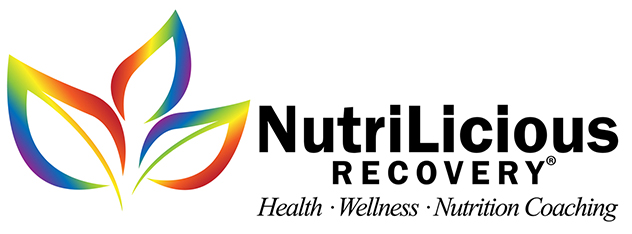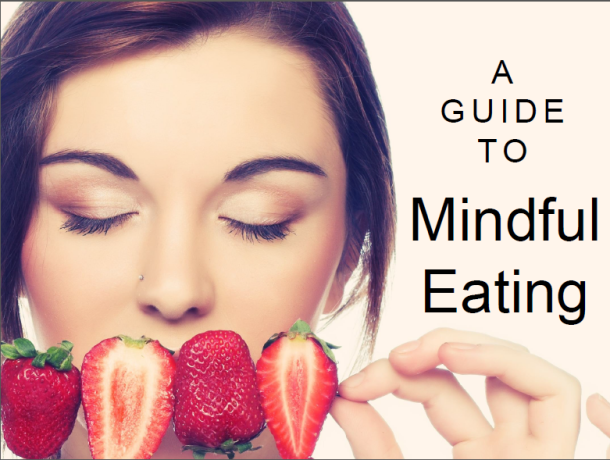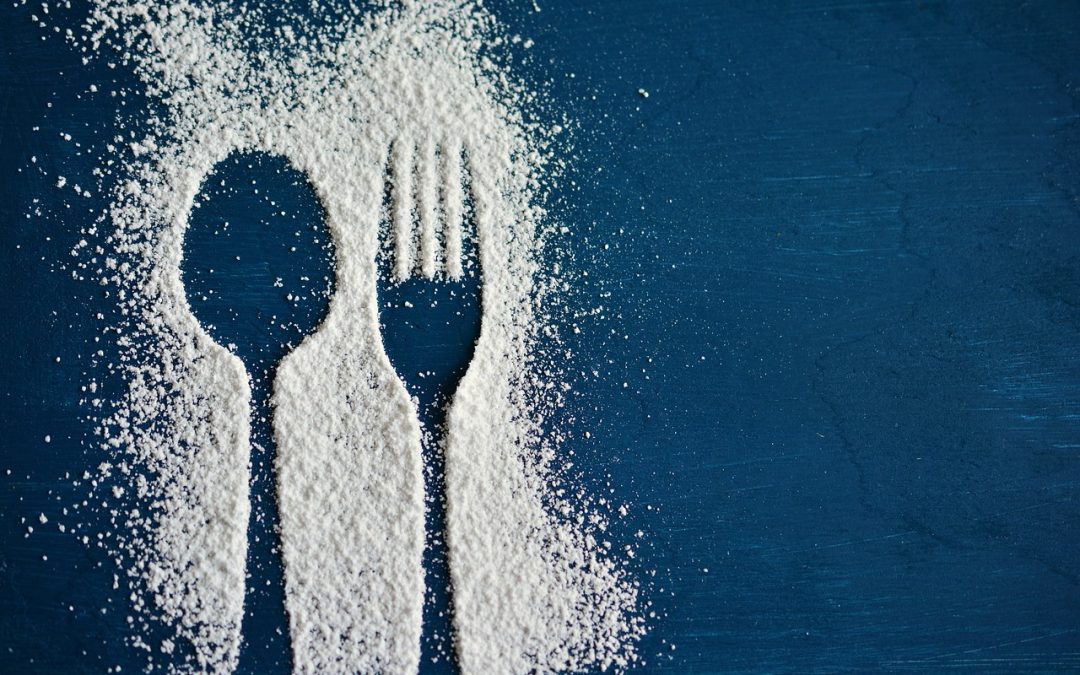
by dnshah | Jul 24, 2019 | Age Defying, Diet and Weight Loss, Health and Wellness Tips, Obesity
I am admitting it. I’m addicted to sugar. Many Americans agree with me. I always thought it was because there are so many delectable American desserts (compared to other cuisines). And considering that the Western American diet is highly processed and overly sweetened, it is no wonder. Even food advertisers captivate audiences with taste, taste, taste as though that is the ONLY criterion for consumption. Sugar has gone from a side role to the main focus of ALL foods. Americans consume far more sugar than is recommended for our health. But this is not just a problem in the US, as other societies also have the sugar blues. Last week my aunt from Mumbai was visiting and she checked her blood sugar daily while consuming the meals I prepared for her. For the first time I was able to see the impacts of the meals I was making for her.
It empowered me to challenge my meals in such a way to lower her blood sugar. But in doing so, I saw what can only be described as “withdrawal” symptoms. This made me look at sugar as though it was a drug – complete with addiction and withdrawal issues. So now I ask the question, “Are we all addicted?”
“More, please!”
In order for a substance to be addictive, there should be an effect on the brain which stimulates the release of dopamine. Dopamine of one type of neurotransmitter that gives us a heightened sense of pleasure. Sugar does this… and it feels so good that over time we want more to get the same “high” (buzz/pleasure).
In nutrition school I learned that humans are programmed to love sweetness. Appreciation of the sweet taste of berries/fruits picked off trees was a survival sense to avoid starvation. That same survival sense has evolved today, and now it is expected to have that pleasant aroma and taste at practically every meal, every snack, and every beverage.
Psychological Behavior Change
If the consumption of a substance can initiate a behavior change, it may be considered as addictive. In animal studies, sugar consumption is shown to have drug-like effects as it is associated with sugar-related binges, cravings, tolerance, and withdrawal. There was even one rat study that showed Oreo cookies causing more neural activity than cocaine.
Acceptance
My clients with sugar-related health goals have made overcoming the cravings a primary focus. But how does one do this? The only way is the cut out all sugar, and neutralize the palate. Yes, this means withdrawal. The challenge is often met with scurrying in the kitchen in search of something sweet. I saw this with my aunt’s withdrawal this past week, and as hard as it was to watch – I remained patient and gave her daily goals to work toward. We were duly rewarded with a lowering of her blood sugar levels. But, this is not a 1-day fix, but a lifestyle change to stop the cravings AND keep them away.
Actions
I will not say these are easy actions to take; but if you challenge yourself with them, rewards will follow. They all deal with labels.
- Don’t flock to “diet” labelled foods. Dietary foods are marketing a lower fat or calorie content, but in order to achieve this, they use other flavors/ingredients (usually sugars) to compensate. (think yogurts).
- Check for sugar in the ingredients list and ensure it is not in the first 5 ingredients. If it is (as in sweet yogurt), stop buying/eating these items. Replace them with wholesome ingredients without the sugars.
- Become knowledgeable about the different names for sugar: cane sugar, cane juice, cane juice solids, cane juice crystals, dextrin, maltodextrin, dextran, barley malt, beet sugar, corn syrup, caramel, carob syrup, brown sugar, date sugar, malt sugar, diatastic malt, fruit juice, fruit juice crystals, golden syrup, turbinado, sorghum syrup, refiner’s syrup, ethyl maltol, maple syrup, yellow sugar, high fructose corn syrup (HFCS), and many more.
- Understand the difference between Natural and Added- sugars.
- Natural sugars from fruits, veggies are usually not an issue because of the FIBER they are contained in. The fiber slows the absorption of the sugars. In the case of 100% fruit juice, if the fibers are removed then the end product becomes refined and harmful to sugar addicts.
- Natural sugars from dairy contain lactose – a milk sugar. While this is not an added sugar, be aware that it can increase blood sugar and should be used sparingly. Yogurts that also add sweeteners should be avoided as this will combine lactose and more concentrated sugars.
- Natural sugars from honey and syrups will increase blood-sugar concentrations, AND keep the palette wanting more sugar later in the day. It doesn’t help to add “a little bit” of these to the diet if one is trying to stop the cravings.
- Words ending in –ose and –ol are sugar alcohols and should be avoided for those trying to stop sugar cravings.
I empower you to challenge yourself to a clean eating week without refined sugars. Even if you don’t have lofty health goals, and don’t for see a problem with your sugar consumption, consider just a week of some healthy meals to neutralize your palette and see if you show any signs of withdrawal. Sign up for the next clean eating challenge here.

by dnshah | Jul 24, 2019 | Age Defying, Health and Wellness Tips
Since the last 20 years over 73,000 research articles have been published on AD, but little progress has been done to cure this disease. While it still remains incurable, it IS PREVENTABLE.
Alzheimer’s Disease can be thought of as a “mind attack,” since we have other medical terms such as “heart attack” or brain attack (stroke). To protect oneself from a mind attack, we have to take preventative actions to keep the mind functioning optimally. These actions include controlling vascular risk factors (high blood pressure & cholesterol), and controlling chronic brain hypoperfusion (lack of adequate blood flow to the brain). All of this translates into:
- A healthy diet
- Physical exercise
- Mental exercise
The combination of these three items means you reduce your risk of the major risk factors for AD. These risk factors are:
- Diabetes
- Hypertension
- Obesity
- Depression
- Lack of Physical Exercise
- Smoking
- Lack of Mental Exercise
Up to 50% of AD are attributable to these 7 risk factors. This didn’t even factor in specific diet patterns. However it has been shown that diet plays a big role in AD. For example Mediterranean diet eaters are associated with a lower incidence of AD and slower cognitive decline. The Mediterranean diet is high in vegetables, beans, fruits, & nuts; and low in meats and dairy. Studies have shown the main constituents of this diet that show benefits are the high vegetable consumption and the ratio of fats (plant-based vs animal based).
Looking across 11 countries, the main indicator of the prevalence of AD is fat consumption. Higher saturated fat intake was associated with a poorer trajectory of cognition and memory. The study showed that women with the lowest saturated fat intakes had the brain function of women 6 years younger! If having younger brain function appeals to you, listen up! Eating healthy pays you back in big ways.
Adherence to a healthy diet, such as the Mediterranean Diet, was associated with longevity of life. In fact a decade after the study was started, the only remaining participants were the ones that were strictly eating healthy.
Eating healthy can mean a variety of things. The keys factors for AD in these studies were:
- Vegetable Consumption
- Fat Consumption (Plant-based vs Animal-based)
This proves yet again that plant-based diets are the crème de la crème of healthy eating. Time to consider meatless Mondays!
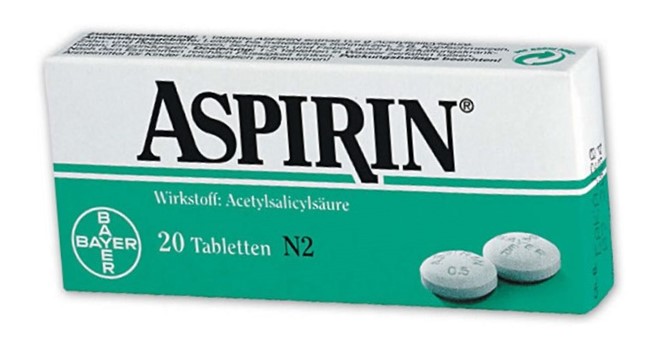
by dnshah | Apr 29, 2019 | Age Defying, Health and Wellness Tips
The recommendations on aspirin therapy for the prevention of cardiovascular disease has changed this year (March, 2019),and it reverses decades of medical advice in the US. The new guidelines say that lose-dose aspirin should NOT be recommended on a regular basis for cardiovascular disease for adults under the age of 70. There are various other factors (heart attack risk, high blood pressure, bleeding risk, previous heart attack, etc.,) that only your doctor can map into your health profile and make the best determination if aspirin therapy is for you or not.
The reason for the change in guideline is because the benefits of aspirin are not evident in the more recent studies, but some harm is. For seniors over the age of 70, the risk of bleeding is higher and aspirin therapy can be more harmful unless there is already an increased risk of cardiovascular disease.
Aspirin therapy is not beneficial for people under the age of 40 either unless there is an increased risk of cardiovascular disease. The risk of bleeding into the brain or stomach is greater than the preventative benefits to those with a lower risk of cardiac issues.
In a 2014 study, aspirin therapy increased the risk of side effects instead of reducing risk of cardiac issues with people having multiple risk factors including high cholesterol, blood pressure or diabetes. In 2018 published studies, the rate of bleeding into the stomach was higher than the benefits of the aspirin therapy. Other risks of aspirin therapy include cancer and death.
References
2013, November; Patrono, Carlo; European Heart Journal, Volume 34, Issue 44, Low-Dose aspirin in primary prevention: cardioprotection, chemoprevention, both, or neither?
2014, December; Ikeda Y, Shimada K, Teramoto T, Uchiyama S, Yamazaki T, Oikawa S, Sugawara M, Ando K, Murata M, Yokoyama K, Ishizuka N; JAMA,312(23); Low-dose aspirin for primary prevention of cardiovascular events in Japanese patients 60 years or older with atherosclerotic risk factors: a randomized clinical trial.
2018, October; ASCEND Study Collaborative Group; New England Journal of Medicine; 379; Effects of Aspirin for Primary Prevention in Persons with Diabetes Mellitus.
2018, September; Gaziano JM, Brotons C, Coppolecchia R, Cricelli C, Darius H, Gorelick PB, Howard G, Pearson TA, Rothwell PM, Ruilope LM, Tendera M, Tognoni G; ARRIVE Executive Committee; Lancet, 392; Use of aspirin to reduce risk of initial vascular events in patients at moderate risk of cardiovascular disease: a randomized, double-blind, placebo-controlled trial.
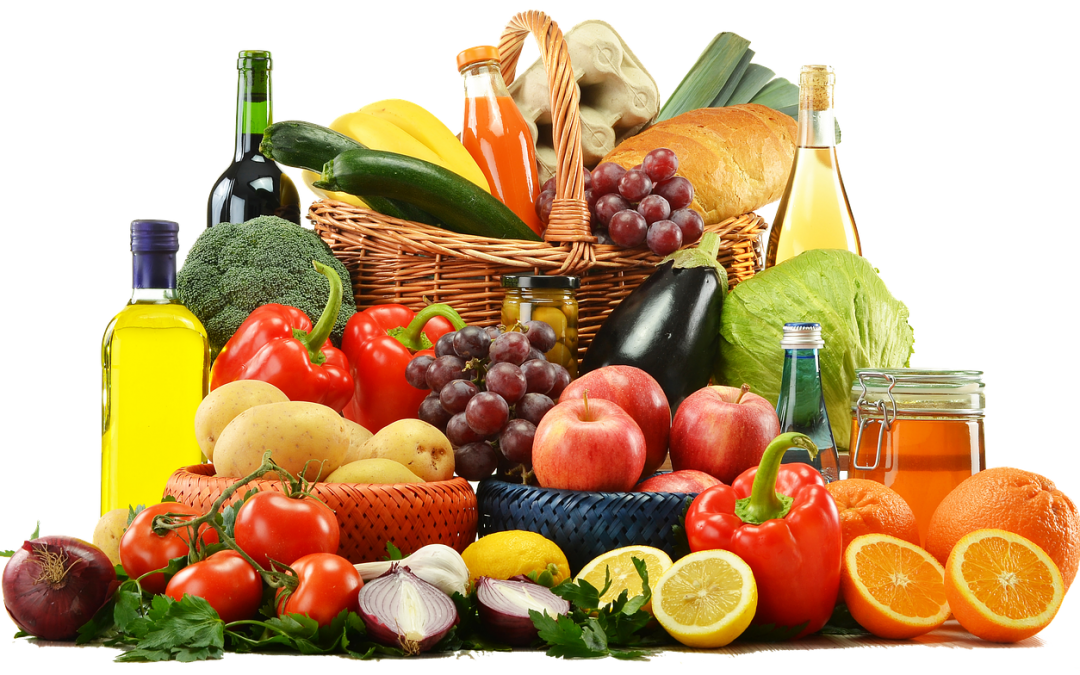
by dnshah | Apr 28, 2019 | Age Defying, Diet and Weight Loss, Health and Wellness Tips, Obesity, Stress Management
For the last 15 years, research shows that diet and lifestyle changes can reduce the risk of type 2 diabetes (T2D) in general. But the latest information shows that race impacts this risk, for example Native Americans are at higher than average risk of T2D. For the last 10 years, eight pueblos of New Mexico and the Navajo Nation have been trialing dietary changes to prevent and reverse diabetes, namely going plant-based…. and they’ve been successful. Thanks to many experts from the Navajo Nation, the Physician’s Committee for Responsible Medicine, and the director of diabetes education, a four-week plant-based eating challenge was conducted citing these significant benefits.
Now they are expanding with more plant-based cooking classes, plant-based “chef’s special” meal options in their cafeterias, professional development seminars for hospital chefs, and presentations with additional materials. Whether you are at a higher risk for T2D or not, you too can be empowered with strategies to improve your health. Contact us for your first complimentary consultation.
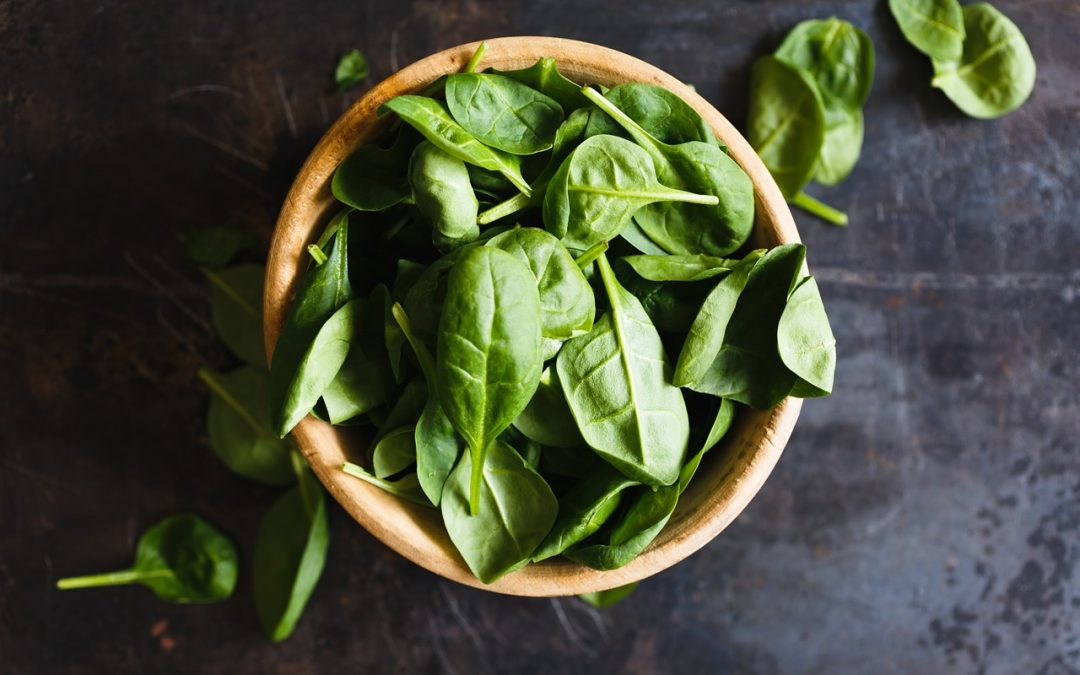
by dnshah | Apr 28, 2019 | Age Defying, Diet and Weight Loss, Health and Wellness Tips, Stress Management
The latest research has found that just one serving of leafy greens a day can take more than a decade (11 years) off an aging brain, in terms of decreased brain power; and two servings a day can have even greater results. What does this mean exactly? Our memory and brain function typically decline as we age; but we can take actions that allow us to not only stop memory loss, but also reverse it. One such action is eating our daily serving of greens.
In the past I’ve talked about the importance of G-B-O-M-B-S, the acronym used to discuss the daily foods one should eat to be healthy. It stands for Greens, Beans, Onions, Mushrooms, Berries, and Seeds/Nuts. That “G” just got upgraded to first class. Realistically the brain is one of our most prized organs, and if there is any nutrition out there that can minimize damage and promote improvement, it has to be talked about.
The strongest association with slowing down our aging decline in the brain is consumption of spinach, kale, collard greens, and lettuce varieties. Does it really matter if it is the vitamin K1, betacarotene, phylloquinone, lutein, nitrate, folate, kaempferol or alpha tocopherol? Most people don’t care as long as we are getting the benefits of consuming the greens in our meals or our smoothies (or both)! Remember that the Environmental Working Group states that spinach, kale, and celery made the dirty dozen list in 2019 and should be purchased organic.
For those actively trying to improve brain function, nutritional supplements can have a big impact, especially in terms of curcumin, a quality omega 3 (fish oil, flax meal), B vitamin supplements, and co-enzyme Q10. For more information, seek out a health professional to help you work your best strategy to improve you. Yes, you can!
Resources
2018, January 16; Barnes, LL; Bennett, DA; Booth, SL; Dawson-Hughes, B; Morris, MC; Wang, Y.; Neurology 90(3); Nutrients and Bioactives in Green Leafy Vegetables and Cognitive Decline.
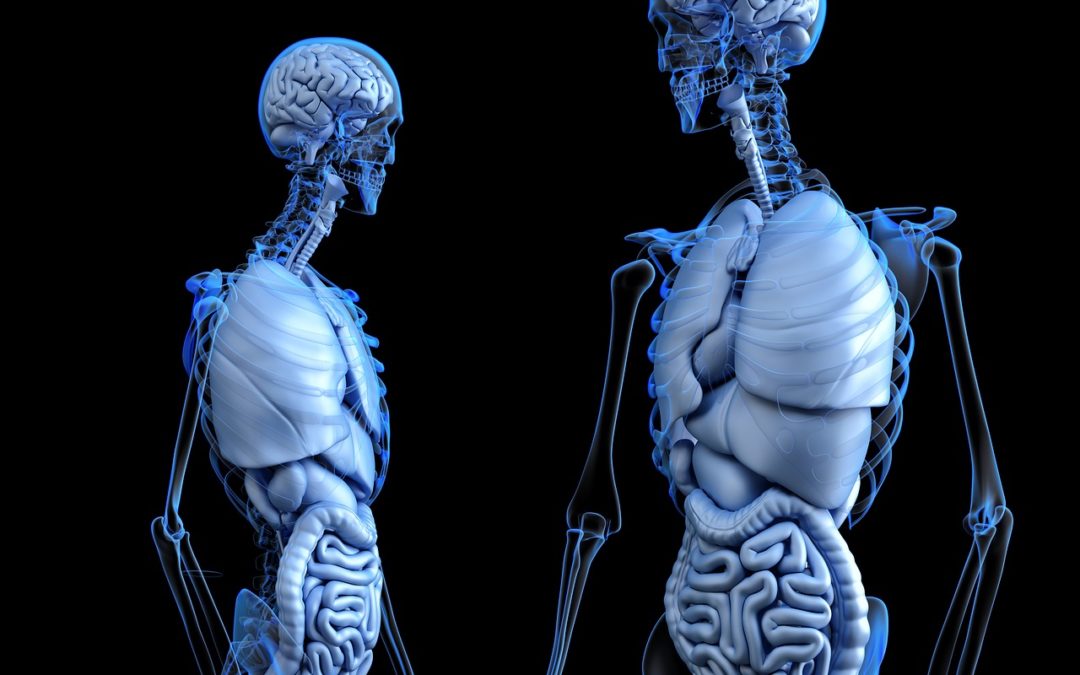
by dnshah | Mar 29, 2019 | Age Defying, Health and Wellness Tips
I am often asked how much nutrition can really impact someone with a chronic illness. The right nutrition can fuel our cells better, which means healthier tissue, which turns into healthier organs. In fact the body, given adequate nutrition daily, can create improved organs over time. It takes 3 days for our intestinal epithelium to regenerate, 6-9 days to regenerate our stomachs, 20-30 days for our skin to regenerate, and 10 years for our skeletons to completely regenerate. Our bodies are in a constant state of creation, so I always have hope that better nutrition can improve our state of health.
When nutrition is lacking over time, we increase our risks of illness (our pre-programmed weaknesses are typically our genetic + environmental vulnerabilities). In our first signs of illness, we hope that nutrition (or medicinal foods) can get our bodies back into balance; unfortunately I see many of today’s pharmaceutical medications simply suppressing the early signs or symptoms of illness. Unfortunately many medical practitioners are becoming experts at disease management, instead of disease healing, aka wellness management… and there is big money (billions) to be made in disease management, especially since our popular health insurances are more inclined on subsidizing expenses for illnesses rather than prevention.
I believe that investing in your health to prevent or delay onset of illness will be a better payoff in terms of total dollars spent AND in quality of life. For those willing to tweak their diets for better regeneration, be empowered.
Here are some nutritional foods that can support our organs. Remember to check with your doctor when adding new herbs, and medicinal foods to your diet. These components can have side effects or interactions with medications, that your doctor can make your more aware of.
Hormone regeneration can involve increasing the endocrine’s ability to secrete more hormones, and transforming degraded hormones into “transient” hormone metabolites.
This includes:
- Vitamin C, which can contribute electrons to transform estradiol (estrogen), progesterone, testosterone. (Think citrus fruits, melons, kiwi, mango, pineapple, etc).
Liver regenerative substances include:
- Glycyrrhizin (think licorice)
- Carvacrol (think oregano)
- Curcumin (think Golden Milk)
- Rooibos (think Rooibos tea)
- Vitamin E (think fatty acids and seeds)
Beta-Cell – There is NO proven substance to reverse destroyed insulin producing beta cells, but these substances have a limited regenerative capacity.
- Black cumin
- Vitamin D
- Curcumin (think Golden milk)
- Arginine (think dairy, seeds, beans)
- Avocado
- Berberine (found in bitter herbs)
- Bitter Melon (“karela”)
- Chard
- Stevia
- Sulforaphane (think broccoli sprouts)
Cardiac Cell Regeneration compounds stimulate cardiac progenitor cells which can differentiate into healthy heart tissue. These include:
- Resveratrol (think grapes and mulberries)
- Siberian Ginseng
- Red Wine Extract
- N-acetyl-cysteine (think legumes)
Nerves – from a 2010 animal study, there are several researched substances that promote neuronal and or stem-cell regenerative effects. Researched substances that promote neuronal and/or stem-cell regenerative effects are listed:
- Curcumin (think golden milk)
- Lion’s Mane Mushroom (think tea with dried mushrooms)
- Apigenin (think celery)
- Blueberry (think berry smoothies)
- Ginseng
- Red Sage
- Resveratrol (think grapes or mulberries)
By the way there are non-food ways to stimulate nerve repair as well:
- Great Music
- Falling in Love
- Stress Reductions
Spine Regeneration and recovery can be improved by many substances, including:
- Curcumin (think golden milk)
- Resveratrol (think grapes and mulberries)
This article is not intended for the treatment or prevention of disease, nor as a substitute for medical treatment, nor as an alternative to medical advice. Use of recommendations in this and other articles is at the choice and risk of the reader.
References
NT-020, a natural therapeutic approach to optimize spatial memory performance and increase neural progenitor cell proliferation and decrease inflammation in the aged rat. Rejuvenation Res. 2010 Jun 29. Epub 2010 Jun 29. PMID: 20586644
Photo-induced regeneration of hormones by electron transfer processes: Potential biological and medical consequences. Radiat Phys Chem Oxf Engl 1993. Updated 2011 Aug ;80(8):890-894. PMID: 21814301

